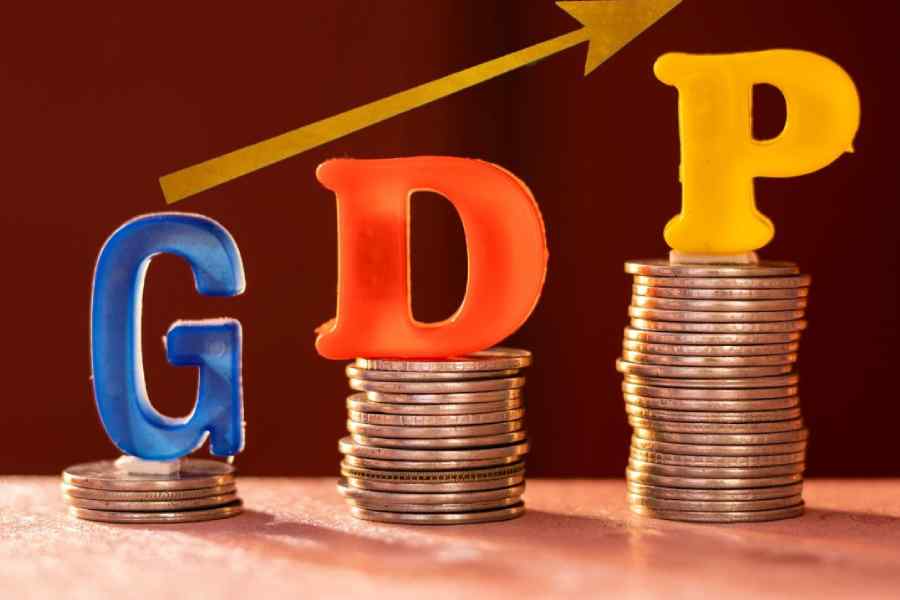To say that 2023 ends with optimism would probably understate the present mood. Euphoria or exuberance might be better representations. For nearly two months, an unstoppable stock market is being driven to delirious levels and values. The most recent reason is the US central bank’s indication that interest rates have peaked. Besides this, in a world of growth deficiency, India’s strong GDP data, solid corporate earnings, healthy financial and non-financial balance sheets, electoral outcomes implying political stability, and positive external developments have all come together to portend exceptional prospects. The enthusiasm extends to private investment, the paucity of which has cast a shadow for long. In the year-end jubilation, the outlook for this too is brimming with certainty — beliefs that 2024 will deliver the long-awaited investment punch ride strong.
The signs are jubilant. The year-to-date rise in the stock market has been 17.5%, while the increase from October is 12%. Last month-end, following the National Statistical Ogency’s data release that showed GDP grew 7.6% in the September quarter, India’s stock market value crossed Hong Kong’s to become the world’s seventh largest. The growth outturn, which was considerably above the expected consensus (6.8%), triggered a fresh dynamic — a chain of upgrades to the full-year GDP forecasts by analysts, agencies and, on December 8, by the Reserve Bank of India, which now projects the economy to grow at 7% in 2023-24 instead of 6.5% before.
The growth upswing has been matched by moderating inflation. While food prices continue to accelerate and long-term inflation expectations have increased, this has not dented confidence that has been reassured by many restrictions imposed by the government to restrain the price rise. The cooling of global oil prices and the diminished chances of recession in Western countries have added to the domestic cheer.
Spirits are also uplifted by, in addition to the usual structural forces, the promise of succeeding China, which is perceived to soon become a reality. Ignited in part by Apple’s relocation of some businesses to India along with associate suppliers and component-makers, the sharpening geopolitical divisions that favour India as an alternative reinforce the perceptions. Then, visualisations, such as a rating agency’s projection that India would become the world’s third-largest economy by 2030 — about the same time as another lowered China’s sovereign credit rating outlook to negative — magnify the relative economic position, unmindful of a more than $10,000 income gap between the average Chinese and Indian citizen. Repeated reaffirmations about attaining a specific economic size by a certain date further aid the formation of positive beliefs.
The moot question is whether convictions and exuberance along with these positive settings will encourage businesses to take risk and commit their capital. It’s well-known that the long-term investment weakness in India has largely been because of the private sector. After the pandemic, the 2-3 points increase above pre-pandemic rates is mostly attributable to the government’s infrastructure drive, which has also propped most of the growth in GDP until now.
The central bank’s latest assessment underpins the case for its renewal on the multiplier dynamics of public capital expenditures, the strong balance sheets of banks and corporates, and improving external trade. These features have resonated in the discourse of businessmen, analysts, and observers for quite some time but are yet to fructify. Many analysts and agencies spot green shoots of private sector activity at this point — for example, in the credit growth trends, increased use of factory capacities, and buoyant demand that is commonly foreseen to spread to rural India soon. Industry representatives have confidently asserted that private investments will soon gather speed and spread.
Indeed, if these expectations are realised into actual investments by private agents, that would be a remarkable break from the growing tradition of false dawns in this regard. For many years now, a cycle of hope and outcome has played out basing itself upon the role of public capex, just as in the present round. Public investments have tried to fill the gap caused by the retreat of business spending and crowding the same, but with little success. Optimistic spells have not converted into an investment push. The present bout is, however, expected to evolve differently from past cycles.
It must be noted that the demand signs are not unqualified. Private consumption, the prime driver for fresh business plans and investments, is not as correspondingly upbeat as the mood. Growth in consumer spending slowed to half in sequence in the past quarter. There are more disturbing signs. The contemporaneous pattern in household savings and borrowings reveals the former dropped a massive 19% in a year to historical lows in relation to national income; on the other hand, debt or borrowings to buy automobiles, houses, or for other consumption purposes have been pacing very fast, leading a concerned central bank to tighten regulation and make such loans pricier. Sales volumes have increased by low single-digits in contrast to the strong growth in profits. Foreign direct investment, which is closely connected with economic growth, has almost halved this year compared to the previous one.
It is not a surprise that unlike the mood of other economic agents, Indian consumers have become more pessimistic about the future at the end of the year. The central bank’s December 2023 round of consumer confidence survey reveals that consumers lowered their expectations of employment and prices; partly swayed by the prevalent enthusiasm perhaps, they expect incomes and spending to increase over a one-year period.
Notwithstanding the dissonance between consumer behaviour and sentiments, by itself a unique feature, the year ends on a high note about the economy. Its optimistic prospects are anticipated to awaken private investments from their long slumber in the new year. Here’s hoping that 2024 converts this round of optimism into real investments.
Renu Kohli is an economist with the Centre for Social and Economic Progress, New Delhi










